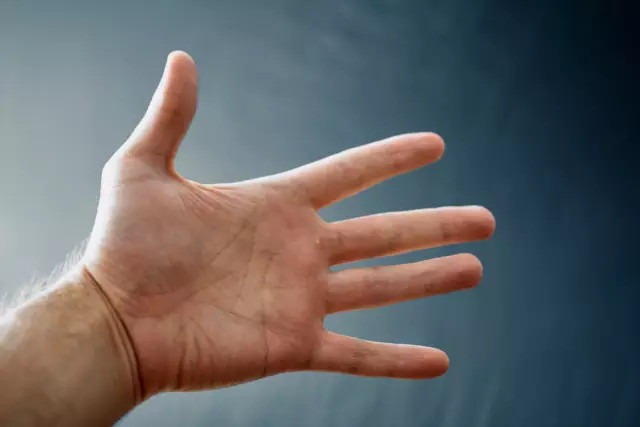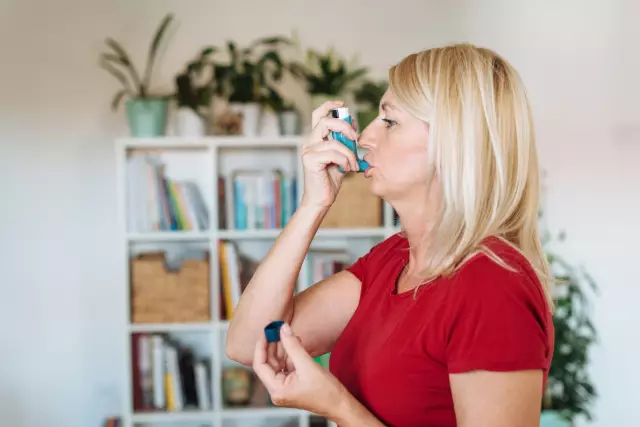- Author Rachel Wainwright [email protected].
- Public 2023-12-15 07:39.
- Last modified 2025-11-02 20:14.
Heilit

Almost every person in his life has at least once suffered a disease such as cheilitis.
Heilit (popular household name - "seizures") is a disease of the lips, which manifests itself in their pallor, the appearance of tissue separation (maceration) in the form of transverse cracks, the presence of a bright red border on the lip closing line. In rare cases, cheilitis can move from the lips to the skin of the face. Most often, cheilitis is observed in people suffering from hypovitaminosis B2.
In fact, the definition of "cheilitis" is not used as a diagnosis, as it is collective and unites under itself independent diseases of the lips, differing in different etiology.
Permanent external exposure to the lips leads to color loss, flaking, cracks and wrinkles. This is food intake, temperature drops, the constant danger of infection, exposure to adverse external factors (harmful substances in the air), and finally, the voluntary use of lipstick.
Cheilitis on the lips can also provoke a general deterioration in the environment, all kinds of allergies, all kinds of diseases of the endocrine system and a decrease in the immune state of the body.
Classification of the most characteristic cheilitis
In medical practice, a large number of cheilitis are known. Moreover, they have a different origin, which means that they require appropriate treatment. Cheilitis on the lips are divided into:
Independent (primary) cheilitis.
Cheilitis glandularis (glandular cheilitis) is a disease that is caused by congenital or acquired hypertrophy and infection of the small salivary glands
There are forms of glandular cheilitis: primary and secondary. Primary lip cheilitis is not associated with other diseases. Secondary cheilitis, as a rule, develops in people without congenital anomalies of the small salivary glands on the background of various diseases with localization on the lips.
Etiological factors include: heredity, tartar, periodontal disease, caries and other infectious diseases. It is characteristic for the age over 30 years, while the lower lip is more often affected.
Cheilitis exfoliativa (exfoliative cheilitis) is a disease of the red border of the lips, which is accompanied by severe peeling. Most often seen in women. The main etiological factor is considered to be a different manifestation of psychopathology, dysfunction of the nervous system. For this form of the disease, the spread of cheilitis to the skin and mucous membrane is not characteristic
There are two forms of exfoliative cheilitis - dry and exudative. Increased capillary permeability is believed to be the cause of the second form. With a dry form, it manifests itself in the appearance of scales, dry lips. The dry form can turn into exudative. The prognosis for the treatment of both forms is favorable.
Сheilitis allergica contactis (contact allergic cheilitis) - occurs as a result of an allergic reaction of the body to all kinds of irritants when they come into contact with the red border of the lips. It is diagnosed, as a rule, in women over 20 years old. One of the etiological factors is the use of lipsticks containing various chemicals. Cheilitis may occur with constant contact with objects (pens, pencils, mouthpieces, etc.)
Cheilitis develops when the body is predisposed to allergic reactions to chemicals. The clinical picture of this form is burning, swelling, redness of the lips. Aggravation occurs upon repeated contact with stimuli. In rare cases, it spreads to mucous membranes and skin.
Сheilitis actinica (actinic (meteorological) cheilitis - inflammatory diseases of the lips associated with increased sensitivity to external natural factors: wind, solar insolation, cold, radiation, even in permissible norms. It is typical for men under 60. The clinical picture of the disease is dry and exudative. There is swelling of the red border, erosion or small bubbles are present. Sometimes the course of the disease is accompanied by pain
Symptomatic (secondary) cheilitis:
- Atopic cheilitis on the lips. It is believed that the etiology of this disease is more related to genetic factors that create conditions for allergic reactions of the body. Allergens can include drugs, cosmetics, food, etc. The disease is characterized by redness, itching, peeling of the red border of the lips
- Cheilitis eczematosa (eczematous cheilitis) - is considered as a symptom of eczema. It can be acute and chronic. A variety of irritants act as allergens. The acute phase of the disease is expressed by swelling of the lips, the spread of pathological changes in the skin, itching and burning in the lips, redness of the lips.
Acute and chronic forms are observed. In addition to the above manifestations, in the acute form of cheilitis, vesicles and crusts appear. Characterized by the defeat of both lips and the transition to the skin.
Cheilitis treatment

With all the variety of types that cheilitis has, the treatment of the disease, in addition to the use of drugs, includes a lot of preventive measures, the main task of which is to normalize the stereotype of lip closure, eliminate bad habits, normalize nutrition, correct bite, restore the tone of the circular muscle of the mouth, normalize breathing through the nose, etc.
Naturally, in each individual case, the dentist will conduct a study of the general condition of the body, identify the causes of the disease and, in addition to treatment, will advise you on the necessary procedures to help prevent cheilitis.
YouTube video related to the article:
The information is generalized and provided for informational purposes only. At the first sign of illness, see your doctor. Self-medication is hazardous to health!






